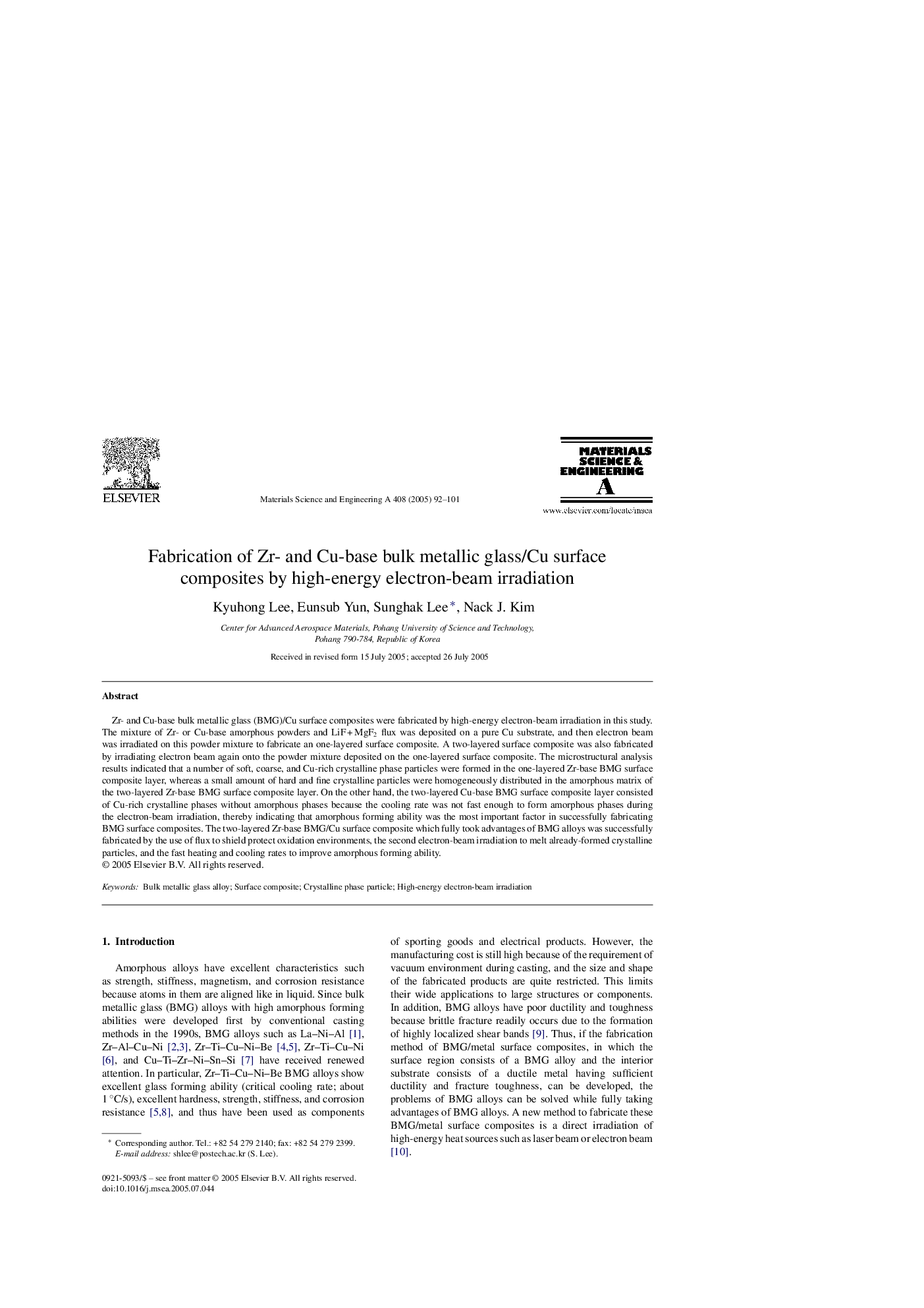| Article ID | Journal | Published Year | Pages | File Type |
|---|---|---|---|---|
| 9795757 | Materials Science and Engineering: A | 2005 | 10 Pages |
Abstract
Zr- and Cu-base bulk metallic glass (BMG)/Cu surface composites were fabricated by high-energy electron-beam irradiation in this study. The mixture of Zr- or Cu-base amorphous powders and LiFÂ +Â MgF2 flux was deposited on a pure Cu substrate, and then electron beam was irradiated on this powder mixture to fabricate an one-layered surface composite. A two-layered surface composite was also fabricated by irradiating electron beam again onto the powder mixture deposited on the one-layered surface composite. The microstructural analysis results indicated that a number of soft, coarse, and Cu-rich crystalline phase particles were formed in the one-layered Zr-base BMG surface composite layer, whereas a small amount of hard and fine crystalline particles were homogeneously distributed in the amorphous matrix of the two-layered Zr-base BMG surface composite layer. On the other hand, the two-layered Cu-base BMG surface composite layer consisted of Cu-rich crystalline phases without amorphous phases because the cooling rate was not fast enough to form amorphous phases during the electron-beam irradiation, thereby indicating that amorphous forming ability was the most important factor in successfully fabricating BMG surface composites. The two-layered Zr-base BMG/Cu surface composite which fully took advantages of BMG alloys was successfully fabricated by the use of flux to shield protect oxidation environments, the second electron-beam irradiation to melt already-formed crystalline particles, and the fast heating and cooling rates to improve amorphous forming ability.
Keywords
Related Topics
Physical Sciences and Engineering
Materials Science
Materials Science (General)
Authors
Kyuhong Lee, Eunsub Yun, Sunghak Lee, Nack J. Kim,
